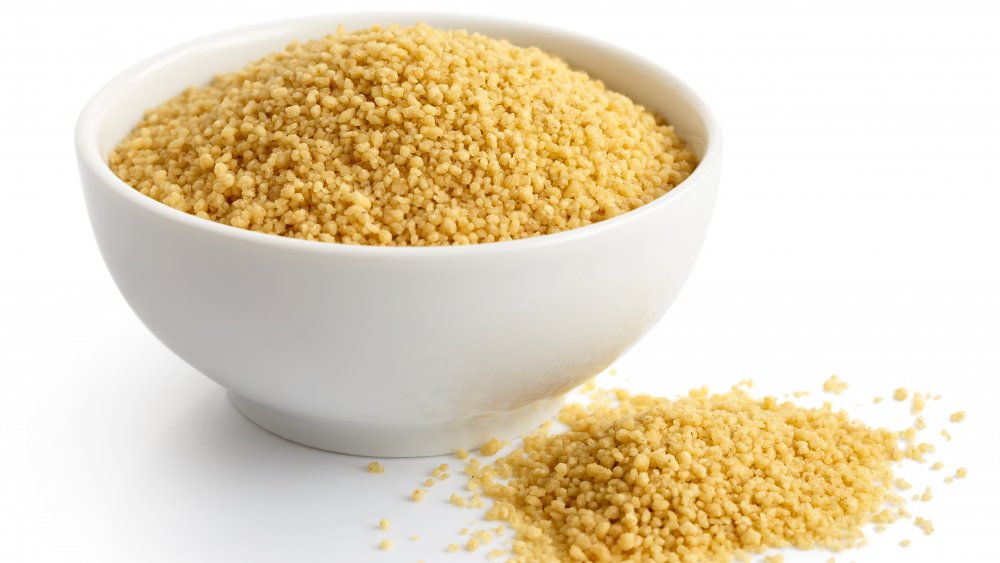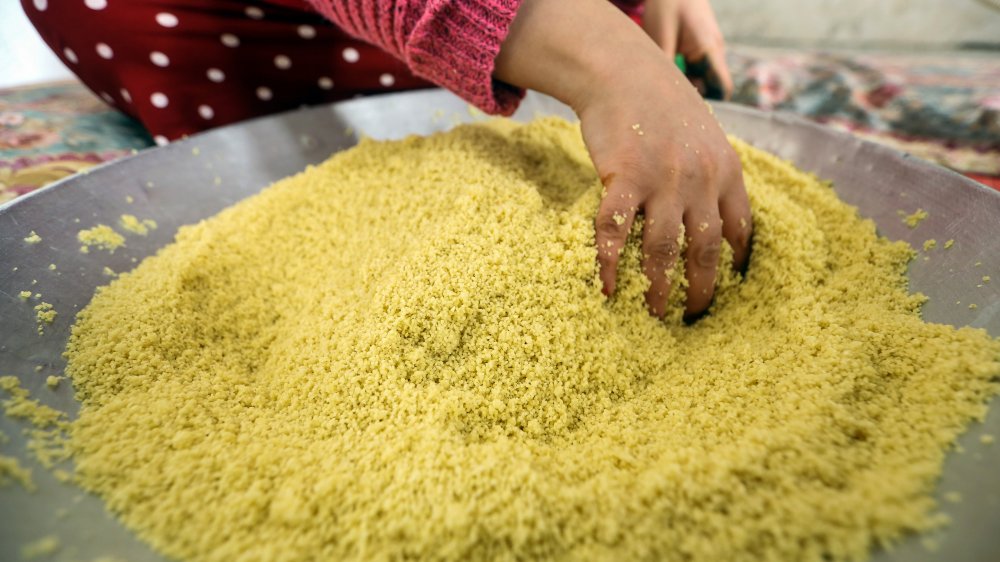You've Been Making Couscous Wrong This Whole Time
Couscous is a staple in many North African dishes and though it's often confused with foods like quinoa and bulgur wheat, it's actually a completely different product altogether. While quinoa and bulgur wheat are grains, couscous is made of durum wheat, making it by definition a pasta (via Safe Food Factory).
Although some people complain about their couscous getting waterlogged (you're using too much water), and others writing it off because it clumps together (you forgot to fluff), there are a few things you can do to ensure that the couscous you make it light and perfectly cooked. Although couscous is technically a pasta, it shouldn't be cooked like one. Rather than pouring it into boiling water and then straining it, couscous should be mixed with hot water at a ratio of 1 cup of water for every 2/3 cup of couscous (via Eating Well).
The most important part of making couscous
Because most brands of couscous for sale in the U.S. have already been cooked, it doesn't need as much time on the stove as you might think and it's important to turn off the heat after the water boils in order avoid overcooking.
Perhaps the most important aspect of cooking couscous occurs at the end — the fluffing. There are a couple of ways to take care of this, and they largely depend on how much time you're willing to commit to the process. Most people keep the fluffing simple by breaking up the grains with a fork (via Bon Appetit). However, if you're hellbent on having the perfect couscous, you can employ the traditional method which is to spread the entirety of the couscous across a baking sheet lined with parchment paper or a clean kitchen towel and break up the clumps by hand.
Using ample amounts of oil or butter in the cooking process should help the grains from sticking to one another and will make whichever fluffing method you choose a bit easier and less time-consuming.

